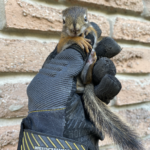Humane wildlife control is a method of addressing wildlife conflicts that prioritizes the well-being of the animal. Being humane to animals means treating them with compassion, respect, and dignity. Humane treatment of animals involves providing them with adequate food, water, shelter, and medical care, and avoiding causing them unnecessary suffering or distress.
Humane wildlife control is the practice of safely and humanely removing animals from residential or commercial areas. This is typically done when animals have found their way into buildings or are causing damage to property.
One way doors, also known as exclusion devices, are a popular method of humane wildlife control. These doors allow animals to exit the building or area, but prevent them from re-entering. The use of one way doors allows animals to be removed without causing them harm or stress. It also allows them to return to their natural habitat, where they can continue to thrive and live their lives.
One way doors are typically installed on areas where animals are known to enter, such as chimneys, roof vents, or gaps in foundations. Once the animal exits through the one way door, it is unable to re-enter the building.
In addition to being humane, one way doors are also an effective method of wildlife control. They allow animals to be removed from the area without the need for traps or other harmful methods.
Humane wildlife control also involves education and prevention. This can include providing homeowners with tips on how to prevent animals from entering their property, such as sealing off entry points and removing attractants. It also involves educating the public on the importance of coexisting with wildlife, and the consequences of lethal control methods.
In summary, being humane to animals means treating them with compassion and respect, and using methods of control that do not cause them unnecessary suffering or distress. This is an important principle that AAA Wildlife Control adheres to in its approach to wildlife management.









